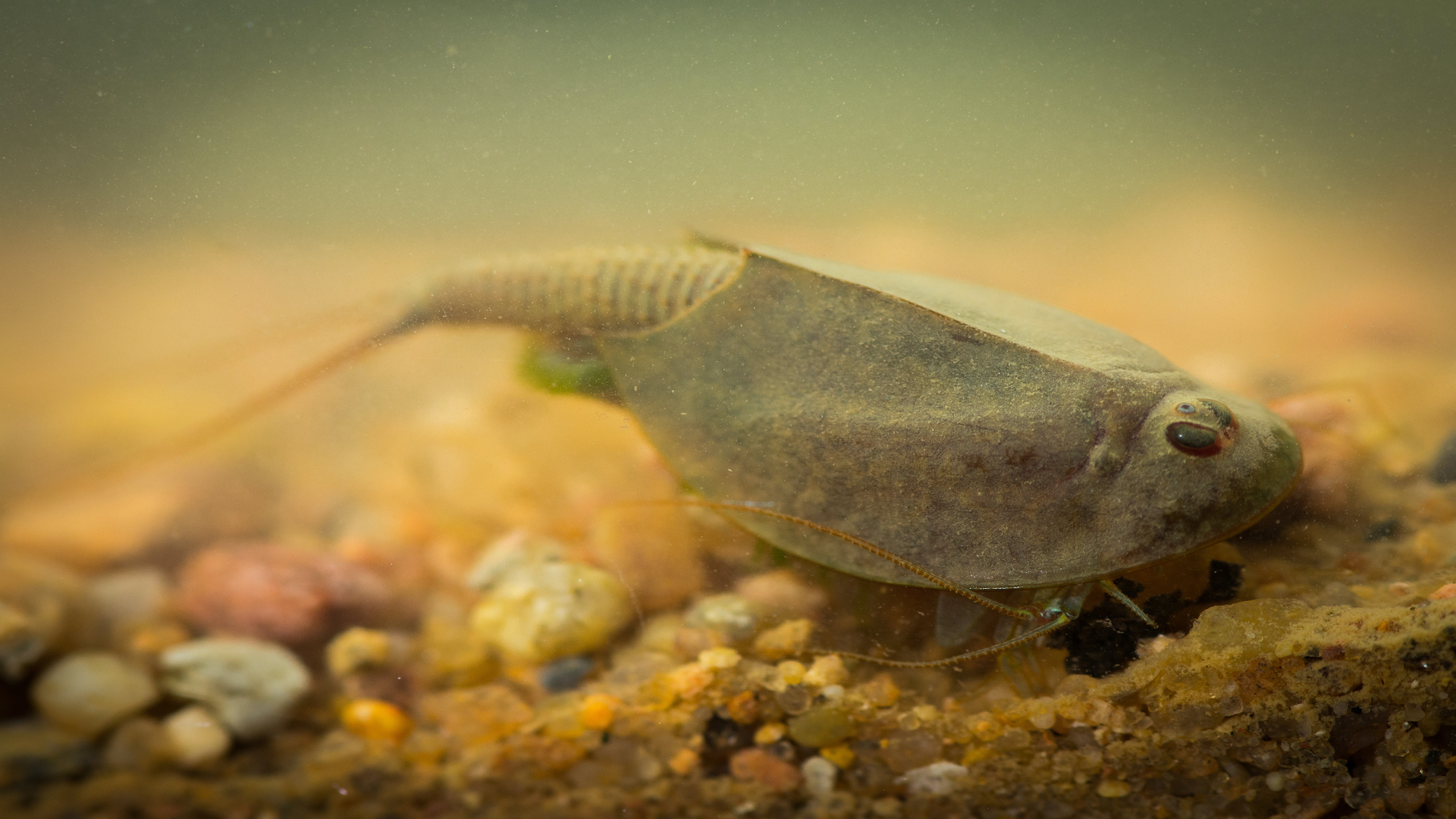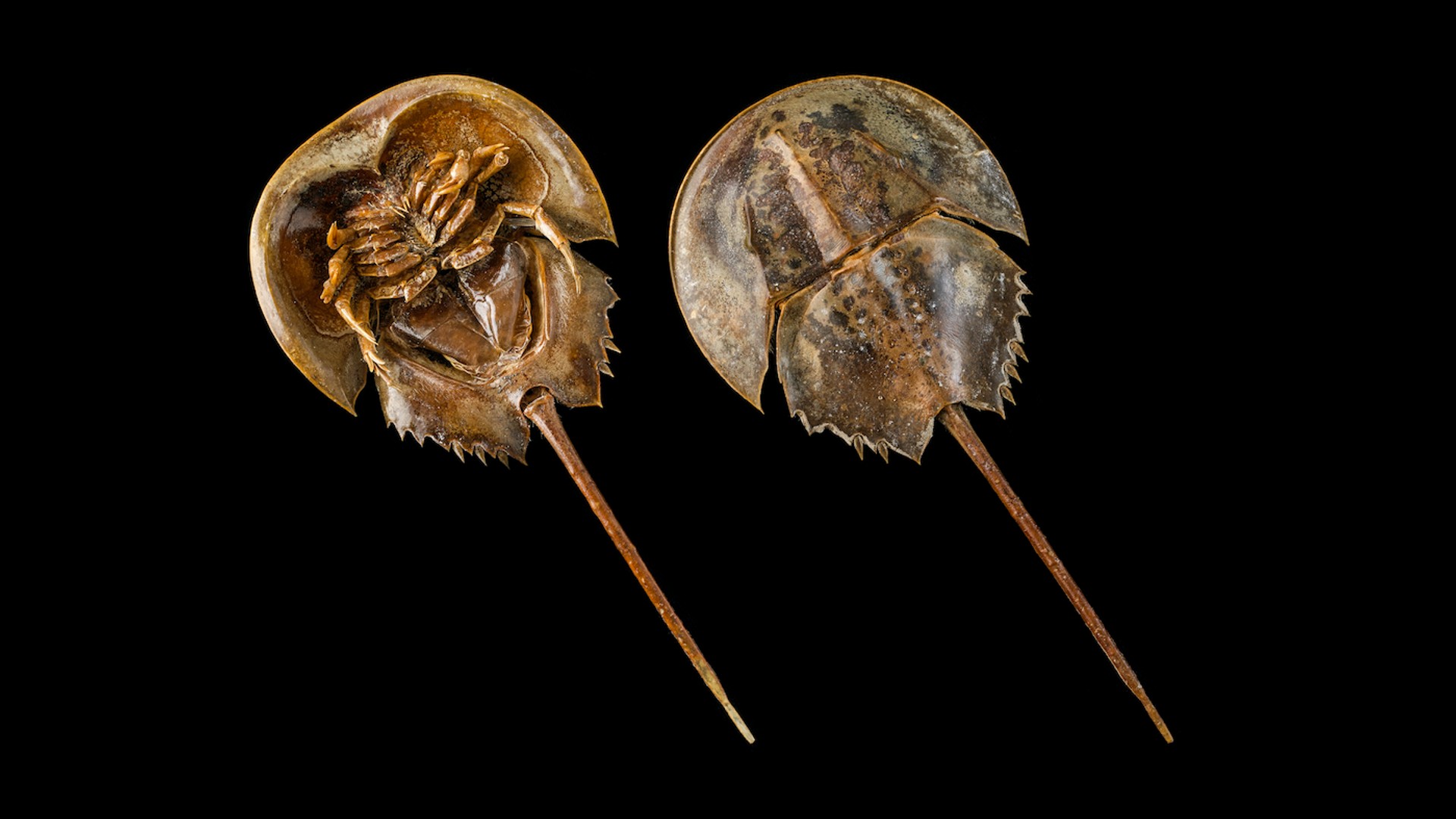
Which animal species has existed the longest?
"Living fossils" like Triops tadpole shrimps are believed to have rubbed shoulders with the dinosaurs, but which animal has been on Earth the longest?

Earth is a challenging, ever-changing place, and everything from the temperature of the oceans to the amount of oxygen in the atmosphere is constantly in flux. And in this world of change, every living creature is running, swimming, slithering or flying to adapt and survive — or ends up dead.
But within this changing world, which animal has survived the longest?
In November 2010, Guinness World Records awarded the title of "oldest living creature" to Triops cancriformis, or tadpole shrimp. And for good reason: Fossils show that armored, shrimp-like crustaceans like these have been around since the Triassic period (251.9 million to 201.3 million years ago).
Tadpole shrimp have bodies like spades, which are perfect for digging at the bottom of the temporary pools they inhabit. The design works so well that they've kept it for hundreds of millions of years. But while they look the same as they always have, DNA research published since 2010 reveals that tadpole shrimp never stopped evolving underneath their armor, creating differences between species across time that human eyes can't always spot.
For instance, the tadpole shrimp T. cancriformis is merely a descendent of similar-looking Triassic ancestors and is actually no more than 25 million years old, a 2013 study published in the journal PeerJ found, and may be as young as 2.6 million years old, according to a 2012 study published in the journal PLOS One.
Related: How long do new species take to evolve?
So, what about other contenders for the title of Earth's longest-surviving animal? There are several species alive today that, like tadpole shrimp, appear to have remained unchanged for many millions of years. Perhaps the most famous of these so-called "living fossils" is a group of deep-sea fish called coelacanths. Researchers first discovered coelacanth fossils in the 1800s and thought they went extinct at the end of the Cretaceous period 66 million years ago. But then, in 1938, fishers hauled up a living coelacanth off the coast of South Africa. These ancient fish date back more than 400 million years, but there's a catch.
Sign up for the Live Science daily newsletter now
Get the world’s most fascinating discoveries delivered straight to your inbox.
The coelacanth species swimming in our oceans today aren't the same as the fossilized coelacanth species, which really did go extinct. A 2010 study published in the journal Marine Biology suggested the living species emerged within the last 20 million to 30 million years. The same is true for the similarly ancient horseshoe crab lineage, which stretches back around 480 million years. A 2012 study published in the journal Molecular Phylogenetics and Evolution found that the oldest living group of Asian horseshoe crabs called Tachypleus only emerged about 25 million years ago, despite looking similar to fossils that are hundreds of millions of years old.

Biologists haven't finished deciphering the evolutionary histories of all living animals and there won't be a definitive answer to this mystery until they do. However, tadpole shrimp, coelacanths and horseshoe crabs all tell us that even the most seemingly stable organisms are always changing.
"I don't think there is evidence that any single species has been around for more than a few million years," Africa Gómez, an evolutionary biologist at the University of Hull and senior author of the 2013 tadpole shrimp study, told Live Science.
Studies of the fossil record suggest that species typically last between 500,000 years and 3 million years before they succumb to extinction or are replaced by a descendant, according to an article in the magazine American Scientist.
For instance, organisms' DNA can mutate, and these mutations can be passed on from one generation to the next. Two genetically similar species can also mate, leading to a new hybrid species that flourishes. Competition, too, forces species to evolve. Predators compete with prey, and animals sharing the same space compete for food and resources.
"Predators evolve, prey evolve, predators evolve, prey evolve, competitors evolve, other competitors evolve," Scott Lidgard, emeritus curator of fossil invertebrates at the Field Museum in Chicago, told Live Science.
What's more, environmental factors can influence how long animals last. "Say a taxon [group] is well adapted to a particular kind of habitat and the climate changes dramatically, " Lidgard said. "If it can't migrate to another place with that same kind of habitat, it goes extinct."
Because change is constant, Gómez doesn't consider any animal to be a living fossil because the term gives the impression that animals stop evolving. Instead, Lidgard argued that "living fossil" can be used as an umbrella term for studying organisms with certain attributes, such as a slow rate of evolutionary change.

Patrick Pester is the trending news writer at Live Science. His work has appeared on other science websites, such as BBC Science Focus and Scientific American. Patrick retrained as a journalist after spending his early career working in zoos and wildlife conservation. He was awarded the Master's Excellence Scholarship to study at Cardiff University where he completed a master's degree in international journalism. He also has a second master's degree in biodiversity, evolution and conservation in action from Middlesex University London. When he isn't writing news, Patrick investigates the sale of human remains.









